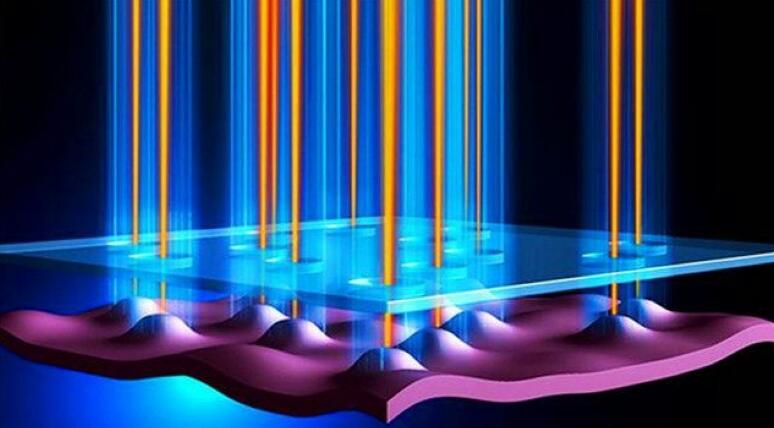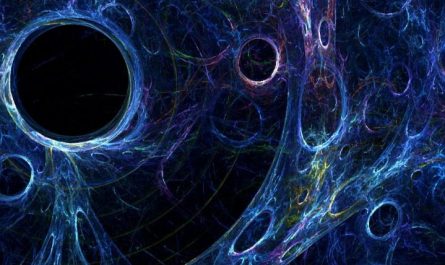People often wonder about the speed of light: how can it be achieved so fast? Is it slowly getting faster and faster, or is it suddenly so fast? Today we will discuss this issue and see if it can make everyone understand.
The speed of light is the basic attribute of photon motion.
At the beginning of the last century, Einstein recognized that the speed of light is the fastest speed of the movement of matter in the universe, and based on this, he founded the special theory of relativity and the general theory of relativity. Therefore, the speed of light in a vacuum is the most important premise of the special theory of relativity. Without this premise, there would be no special theory of relativity; general relativity is a deeper understanding of the universe on the basis of the special theory of relativity, and its foundation is the theory of gravitational field theory, that is, the theory that gravity causes space-time bending , The speed of light is still the most important constant.
At the beginning, many people did not understand or believe in the speed of light and the theory of relativity guided by the speed of light. Afterwards, countless observational facts and experimental experiments verified the accuracy of Einstein’s theory. Scientists believed it, and more and more people in the world believed it. Since then, special relativity and general relativity have become one of the cornerstones of modern physics, and the other cornerstone is quantum mechanics.
But today, many people still question the speed of light and the theory of relativity. For example, why can light have such a high speed? How is it achieved? This is a problem that many people want to figure out. If they don’t figure it out, it seems that the speed of light is still a mystery.
In fact, this question is very simple. The answer is one sentence: the speed of light is the basic property of the photon itself. To explain further, light is composed of a bunch of photons, which is an energy flow composed of photons, and the speed of light is the nature of photons. Once it is born, it is at this speed and does not need to be “reached.”
Then why is the photon born at this speed?
This is because the photon has no rest mass, so it cannot be quiet. In this world, all matter without rest mass moves at the speed of light in vacuum. For example, the speed of gravitational waves is also the speed of light. The accurate value of the speed of light in vacuum is c=299792458m/s (meters per second). This speed is not guessed by a blind man by estimating one paw and two buckets of water, but is obtained by scientists who went after the measurement more than 300 years ago. Later, in order to obtain an integer value, the International Conference on Weights and Measures revised the definition of meter and changed it. The length of a meter (m) is defined as the length of 1/299792458s of light moving in a vacuum. In this way, the speed of light in the vacuum and the scale of meters are mutually confirmed and more accurate.
Photons have no static mass, but have energy and relativistic mass. The so-called relativistic mass is the dynamic mass, and the energy of the photon follows the Einstein mass-energy equation, that is, E=mc^2=hv. From this, the photon momentum can be calculated as m=hv/c^2. Here E is energy, m is the upper limit of photon mass, c is the speed of light, h is Planck’s constant, and v is any electromagnetic wave frequency.
The longer the wavelength of light, the lower the frequency, and the lower the energy; conversely, the shorter the wavelength, the higher the frequency, and the greater the energy. According to this formula, we can calculate the 500nm wavelength of the green light in the middle of the visible light, its frequency is about 6*10^14Hz, the photon dynamic mass is about 4.4*10^-36kg; and the wavelength is about 3*10^-16m, and the frequency is about 10. ^24Hz gamma rays, the photon momentum is about 7.4*10^-27km. It can be seen that the dynamic mass of a photon is proportional to the energy and inversely proportional to the wavelength, that is to say, the shorter the wavelength, the higher the frequency, and the greater the dynamic mass.
But the speed of photons has nothing to do with energy, they are all the same.
Electromagnetic waves in all bands are transmitted by photons, so light is electromagnetic waves. The energy of electromagnetic waves ranges from low to high, consisting of radio waves, infrared, visible light, ultraviolet, X-rays, gamma rays and other different bands and frequencies. Visible light only occupies a small section between 380~760nm, and the rest of the electromagnetic waves They are all invisible to the naked eye, but can be detected by various equipment and instruments. These bands of electromagnetic waves can also be called invisible light waves.
These electromagnetic waves of different energies move at the same speed, such as the light from a candle, the light from the sun, and the invisible X-rays and gamma rays. The speed is about 300,000 thousand per second. Meter. It’s just that the frequency is different, and the dynamic quality is also different. The higher the frequency, the stronger the energy and the greater the dynamic mass, the greater the damage to the human body and other organisms. This is why X-rays and γ-rays are very powerful.
How are photons produced?
Light is an electromagnetic wave, and what constitutes an electromagnetic wave is a stream of photons. In quantum mechanics, photons are not only tiny particles one by one, but also waves like sound waves, which are wave-like and therefore have wave-particle duality. The particle nature of the photon is proved by the photoelectric effect; and its volatility is proved by the photon diffraction.
According to Maxwell’s electromagnetic field theory, photons are excited by electromagnetic fields. Any atom has electrons on the periphery, and these electrons can be at different energy levels. When an electron is excited by a certain amount of energy, it will jump to a higher energy level. But this kind of jumping out of one’s own energy level is a bit like people leaving home, drifting outside, feeling unsafe and unstable, so they always want to go home. As an electron, it means returning to its own low energy level, and going from high to low is also called a transition. To do this, just as people buy tickets when they go home, electrons have to release a photon.
When a large number of electrons do this kind of movement, just like the Spring Festival before and after the Spring Festival, many photons are released back and forth. Once these photons were born, they couldn’t stop because they didn’t have static mass, and they ran wildly at a speed of about 30,000 kilometers per second. If they weren’t blocked, they would keep running. Photons have a characteristic. They don’t look aside when they run, and they move forward courageously. Even the denser photons will not affect each other. Only when there is an electron blocking collision on the road, will they interact with each other and the light will attenuate.
Sunlight, starlight, incandescent light, fluorescent light, LED light, candlelight, X-ray, gamma light, radio, microwave, infrared, ultraviolet, etc., all visible and invisible light, that is, electromagnetic waves, are like this Sent out.
Conclusion: Light is an energy flow composed of photons, which has wave-particle duality. Photons have no static mass, that is, they cannot be stationary, so they move at the speed of light when they are born. The path of light is a straight line, it will not bend, but it will be reflected, refracted, diffracted, and absorbed by other charged materials.






